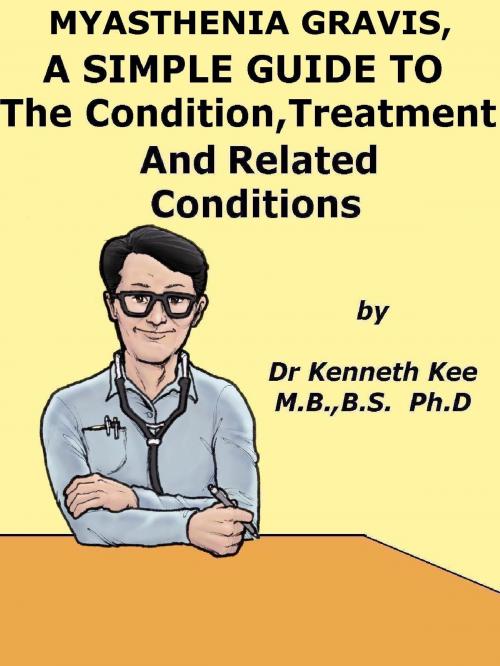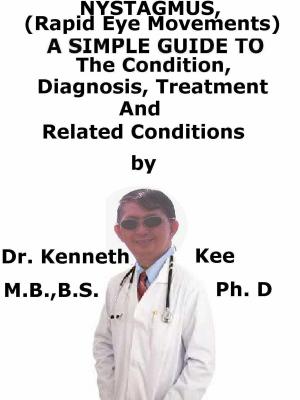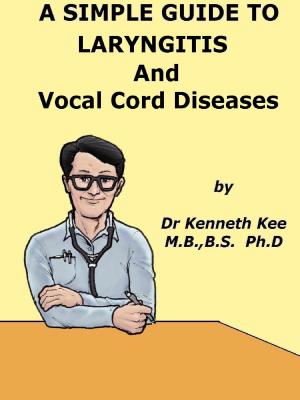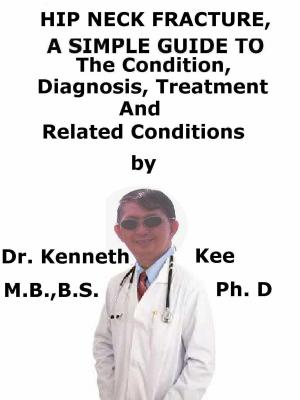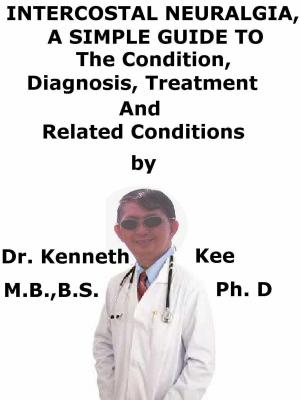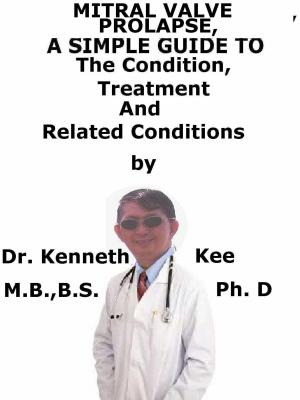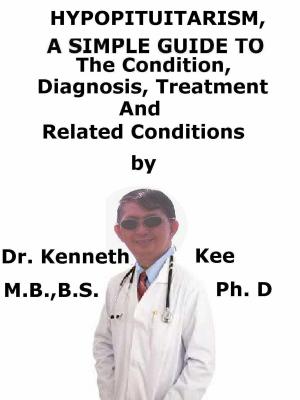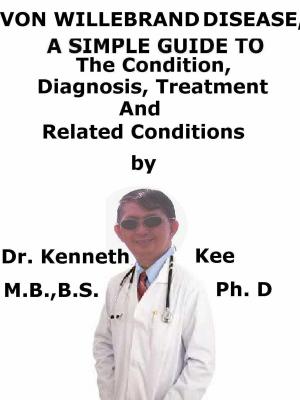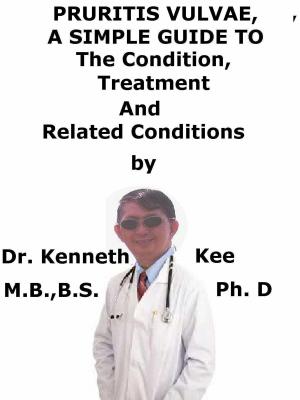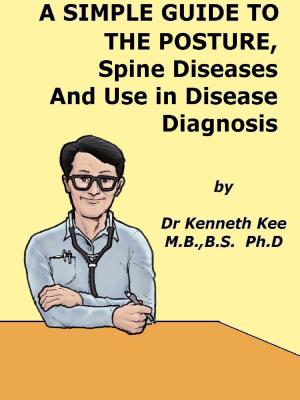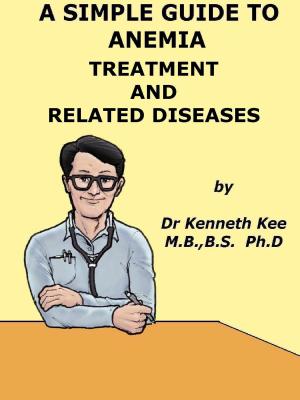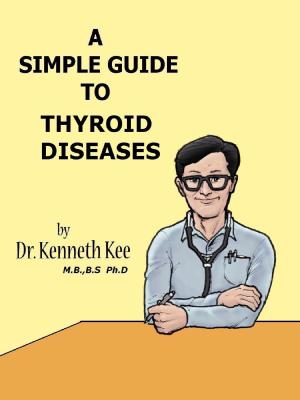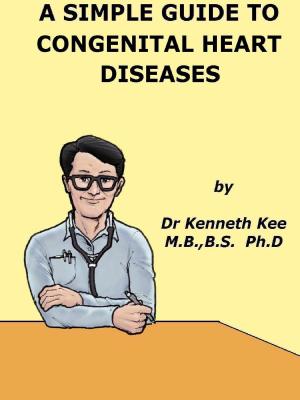Myasthenia Gravis, A Simple Guide To The Condition, Treatment And Related Conditions
Nonfiction, Health & Well Being, Health, Ailments & Diseases, Immune System, Medical, Specialties, Internal Medicine, Neurology| Author: | Kenneth Kee | ISBN: | 9781311678225 |
| Publisher: | Kenneth Kee | Publication: | June 21, 2015 |
| Imprint: | Smashwords Edition | Language: | English |
| Author: | Kenneth Kee |
| ISBN: | 9781311678225 |
| Publisher: | Kenneth Kee |
| Publication: | June 21, 2015 |
| Imprint: | Smashwords Edition |
| Language: | English |
Myasthenia gravis is a rare chronic autoimmune neuromuscular disease
This condition occurs more in women than men at any age
Myasthenia gravis literally means grave muscle weakness.
Antibodies blocks the neurotransmitter junction, causing a neuromuscular illness
The thymus gland may give incorrect instructions to developing immunity
This results in the production of the acetylcholine receptor antibodies.
Which unfortunately block the receptors at the neuromuscular junction
This result in the receptors unable to generate a muscle contraction
The muscle weakness usually increases during periods of activity
There is weakness of the eye, neck, limbs and fatigue
There is slurred speech and difficulty in swallowing
There may a waddling gait and difficulty in breathing
Treatment for myasthenia gravis is with anticholinesterase agents such as neostigmine
Immunosuppressive drugs such as prednisone, cyclosporine, and azathioprine
Thymectomy reduces symptoms in more than 70 percent of patients surgically
Plasmapheresis in which intravenous immune globulin replaces the abnormal antibodies
-An original poem by Kenneth Kee
Interesting Tips about the Myasthenia Gravis
A Healthy Lifestyle
1. Take a well Balanced Diet
2. Treatment for myasthenia gravis has improved tremendously with several therapies to help reduce and improve muscle weakness.
a. Anticholinesterase agents such as neostigmine and pyridostigmine which help improve neuromuscular transmission and increase muscle strength.
b. Immunosuppressive drugs such as prednisone, cyclosporine, and azathioprine improve muscle strength by suppressing the production of abnormal antibodies.
They must be used cautiously because of their many side effects.
c. .Thymectomy, the surgical removal of the thymus gland (usually abnormal in myasthenia gravis), reduces symptoms in more than 70 percent of patients and may cure some individuals, possibly by re-balancing the immune system.
d. Plasmapheresis in which abnormal antibodies are removed from the blood, and high-dose intravenous immune globulin which temporarily modifies the immune system and provides the body with normal antibodies from donated blood.
3. Keep bones and body strong
Bone marrow produces our blood
Eat foods rich in calcium like yogurt, cheese, milk, and dark green vegetables.
Eat foods rich in Vitamin D, like eggs, fatty fish, cereal, and fortified milk.
Eat food rich in Vitamins B and C such as green vegetables and fruits
Zinc and other minerals are important to the body
4. Get enough rest and Sleep
Avoid stress and tension
5. Exercise and stay active.
It is best to do weight-bearing exercise such as walking, jogging, stair climbing, dancing, or lifting weights for 2½ hours a week.
One way to do this is to be active 30 minutes a day at least 5 days a week.
Begin slowly especially if a person has not been active.
6. Do not drink more than 2 alcohol drinks a day for a man or 1 alcohol drink a day for a woman.
Alcohol use also increases the chance of falling and breaking a bone.
Alcohol can affect the neurons and brain cells.
7. Stop or do not begin smoking.
It also interferes with blood supply and healing.
Chapter 1
Myasthenia Gravis
What is Myasthenia gravis?
Myasthenia gravis is a rare chronic autoimmune neuromuscular disease that causes weakening of the skeletal muscles of the body.
The name myasthenia gravis literally means grave muscle weakness.
How does Myasthenia Gravis develop?
Myasthenia gravis interferes in the transmission of nerve impulses to muscles.
Normally the nerve endings release a neurotransmitter substance called acetylcholine which then travels to the neuromuscular junction.
The acetylcholine binds to acetylcholine receptors which are activated and generate a muscle contraction.
In myasthenia gravis, antibodies produced by the body's immune system block, alter, or destroy the receptors for acetylcholine at the neuromuscular junction and prevent muscle contraction.
Myasthenia gravis is a rare chronic autoimmune neuromuscular disease
This condition occurs more in women than men at any age
Myasthenia gravis literally means grave muscle weakness.
Antibodies blocks the neurotransmitter junction, causing a neuromuscular illness
The thymus gland may give incorrect instructions to developing immunity
This results in the production of the acetylcholine receptor antibodies.
Which unfortunately block the receptors at the neuromuscular junction
This result in the receptors unable to generate a muscle contraction
The muscle weakness usually increases during periods of activity
There is weakness of the eye, neck, limbs and fatigue
There is slurred speech and difficulty in swallowing
There may a waddling gait and difficulty in breathing
Treatment for myasthenia gravis is with anticholinesterase agents such as neostigmine
Immunosuppressive drugs such as prednisone, cyclosporine, and azathioprine
Thymectomy reduces symptoms in more than 70 percent of patients surgically
Plasmapheresis in which intravenous immune globulin replaces the abnormal antibodies
-An original poem by Kenneth Kee
Interesting Tips about the Myasthenia Gravis
A Healthy Lifestyle
1. Take a well Balanced Diet
2. Treatment for myasthenia gravis has improved tremendously with several therapies to help reduce and improve muscle weakness.
a. Anticholinesterase agents such as neostigmine and pyridostigmine which help improve neuromuscular transmission and increase muscle strength.
b. Immunosuppressive drugs such as prednisone, cyclosporine, and azathioprine improve muscle strength by suppressing the production of abnormal antibodies.
They must be used cautiously because of their many side effects.
c. .Thymectomy, the surgical removal of the thymus gland (usually abnormal in myasthenia gravis), reduces symptoms in more than 70 percent of patients and may cure some individuals, possibly by re-balancing the immune system.
d. Plasmapheresis in which abnormal antibodies are removed from the blood, and high-dose intravenous immune globulin which temporarily modifies the immune system and provides the body with normal antibodies from donated blood.
3. Keep bones and body strong
Bone marrow produces our blood
Eat foods rich in calcium like yogurt, cheese, milk, and dark green vegetables.
Eat foods rich in Vitamin D, like eggs, fatty fish, cereal, and fortified milk.
Eat food rich in Vitamins B and C such as green vegetables and fruits
Zinc and other minerals are important to the body
4. Get enough rest and Sleep
Avoid stress and tension
5. Exercise and stay active.
It is best to do weight-bearing exercise such as walking, jogging, stair climbing, dancing, or lifting weights for 2½ hours a week.
One way to do this is to be active 30 minutes a day at least 5 days a week.
Begin slowly especially if a person has not been active.
6. Do not drink more than 2 alcohol drinks a day for a man or 1 alcohol drink a day for a woman.
Alcohol use also increases the chance of falling and breaking a bone.
Alcohol can affect the neurons and brain cells.
7. Stop or do not begin smoking.
It also interferes with blood supply and healing.
Chapter 1
Myasthenia Gravis
What is Myasthenia gravis?
Myasthenia gravis is a rare chronic autoimmune neuromuscular disease that causes weakening of the skeletal muscles of the body.
The name myasthenia gravis literally means grave muscle weakness.
How does Myasthenia Gravis develop?
Myasthenia gravis interferes in the transmission of nerve impulses to muscles.
Normally the nerve endings release a neurotransmitter substance called acetylcholine which then travels to the neuromuscular junction.
The acetylcholine binds to acetylcholine receptors which are activated and generate a muscle contraction.
In myasthenia gravis, antibodies produced by the body's immune system block, alter, or destroy the receptors for acetylcholine at the neuromuscular junction and prevent muscle contraction.
